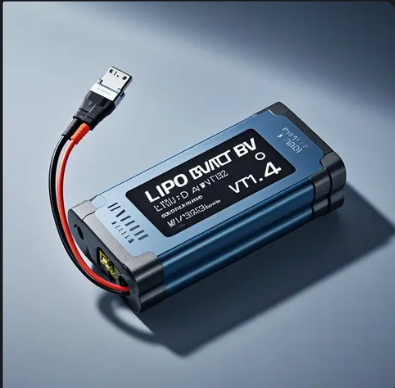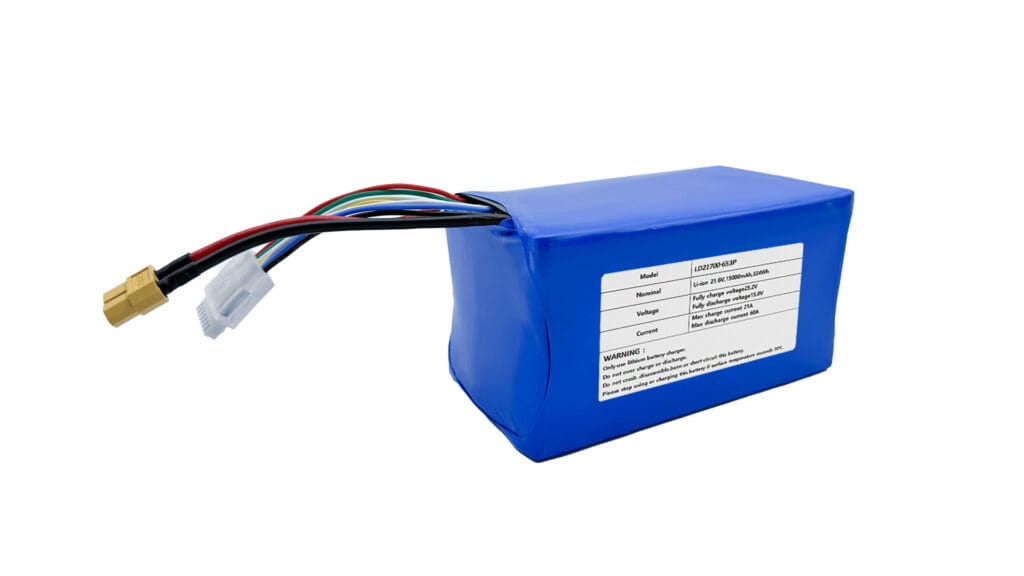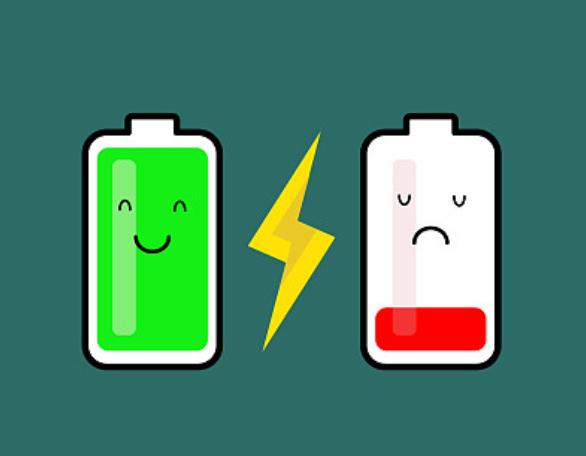Introduction
LiPo (Lithium Polymer) batteries are a widely used power source in various applications, from drones and RC models to wearable devices and medical equipment. Understanding LiPo battery voltage is crucial for ensuring safety, longevity, and optimal performance. This comprehensive guide covers the essential aspects of LiPo battery voltage, including standard voltages, safety concerns, charging and discharging guidelines, and tips for maximizing performance.
Basic Concepts and Parameters
What is the Standard Voltage of a LiPo Battery?
LiPo batteries typically have a standard nominal voltage of 3.7V per cell. The nominal voltage refers to the average voltage during discharge under normal operating conditions.
How Cell Configuration Impacts Voltage
The versatility of LiPo batteries extends to their ability to be configured with multiple cells to meet the specific power requirements of different applications. Understanding these configurations is key to grasping the final voltage level LiPo provides.
Single Cell (1S): Powering the Basics. A 1S LiPo voltage configuration consists of a single cell, providing a voltage range of approximately 3.0V to 4.2V, with a nominal voltage of 3.7V. This setup is commonly found in smaller, lower-power devices such as wearable fitness trackers or simple sensors within IoT devices. The simplicity and compact size of 1S batteries make them ideal for these applications.
Series Connections: Boosting the Voltage (2S, 3S, and Beyond). For applications demanding higher power, such as the powerful motors in drones or certain portable medical devices, LiPo cells are often connected in series. In a series connection, the voltages of individual cells add up.
For instance, a 2S LiPo battery pack (two cells in series) has a nominal voltage of 7.4V (2 x 3.7V), while a 3S LiPo battery boasts a nominal voltage of 11.1V (3 x 3.7V). The designation “S” clearly indicates the number of cells connected in series. You’ll often see drones utilizing drone battery voltage configurations like 4S or even 6S to achieve the necessary power for flight and maneuverability. Similarly, some medical device battery voltage requirements necessitate multi-cell series configurations for reliable operation.
Parallel Connections: Increasing Capacity, Not Voltage. In contrast to series connections, connecting LiPo batteries in parallel increases the overall capacity, measured in mAh (milliamp-hours), which translates to longer runtime. However, the voltage of LiPo in a parallel configuration remains the same as that of a single cell.
For example, two 1S LiPo batteries connected in parallel will still have a nominal voltage of 3.7V, but their combined capacity will be doubled. While parallel connections don’t increase voltage, they are crucial for extending the operational time of various devices. It’s important to ensure that cells connected in parallel are well-matched to prevent imbalances during charging and discharging.
How to Determine the Remaining Charge (SOC) of a LiPo Battery Using Voltage?
The State of Charge (SOC) can be roughly estimated by checking the battery’s voltage:
- 4.2V: Fully charged
- 3.7V: Approximately 50% charge
- 3.0V: Fully discharged
However, voltage alone may not give a precise SOC, as temperature and load conditions can influence voltage readings. Specialized equipment like a battery management system (BMS) provides more accurate readings.
Safe Use and Protection
What Are the Dangers of Overcharging or Overdischarging LiPo Batteries?
- Overcharging: Charging a LiPo battery beyond 4.2V per cell can cause overheating, fire, or even an explosion. Always use a charger specifically designed for LiPo batteries to avoid overcharging.
- Overdischarging: Discharging a LiPo battery below 3.0V per cell can cause irreversible damage and reduce battery life.
To avoid these risks, always use a LiPo battery charger with proper voltage limits and avoid discharging below safe levels.
Why Do LiPo Batteries Require Balanced Charging?
LiPo batteries with multiple cells (e.g., 3S LiPo battery or 4S LiPo battery) need balanced charging to ensure that each cell charges to the same voltage level. If one cell is overcharged while others are undercharged, it can lead to voltage imbalance, increasing the risk of battery failure or even fire.
A battery balance charger ensures that the voltage between cells remains equal during charging, preventing potential damage.
Source:Battery University
How to Monitor the Voltage of LiPo Batteries? Is a Dedicated Voltage Alarm or Balancer Required?
To monitor the voltage of a LiPo battery, you can use a voltage alarm that triggers when the voltage drops below a preset threshold. For multi-cell batteries, a balancer is essential to prevent voltage imbalances between cells. Many modern chargers come with built-in balancing features, but standalone balance chargers and alarms are also available for enhanced monitoring.
Charging and Discharging Management
How to Set the Correct LiPo Charging Voltage and Current?
- Charging voltage: For a standard LiPo battery, the charging voltage should be set to 4.2V per cell.
- Charging current: The current should not exceed 1C (where C is the capacity of the battery). For example, if you have a 1000mAh LiPo battery, the maximum safe charging current would be 1A.
Properly setting the voltage and current ensures a safe and effective charge, minimizing wear on the battery.
Does Fast Charging Affect LiPo Battery Voltage Stability?
Fast charging can cause the battery to heat up, which can lead to voltage instability and decreased battery lifespan. It’s recommended to charge LiPo batteries at a slower rate for longer battery life unless the battery is specifically rated for high charging speeds.
What is the Safe Discharge Cutoff Voltage?
The discharge cutoff voltage should be set to 3.0V per cell. Discharging below this voltage can permanently damage the battery and reduce its capacity.
For specific devices like drones or RC models, the discharge cutoff might be slightly higher, depending on the battery and device specifications.
Performance and Lifespan Optimization
Does a Rapid Voltage Drop Indicate Battery Aging?
A rapid voltage drop during use may indicate battery aging or capacity loss. If the voltage quickly falls to 3.0V under normal load, it might be time to replace the battery.
What Voltage is Ideal for Storing LiPo Batteries?
When storing LiPo batteries for an extended period, it is best to store them at around 3.7V per cell. This voltage helps to preserve the battery’s health and prevents degradation.
How Do Temperature Extremes Affect LiPo Battery Voltage?
Low temperatures can cause the voltage of a LiPo battery to drop rapidly, affecting its performance. On the other hand, high temperatures can lead to voltage instability, potential damage, and safety risks. Always store LiPo batteries in a cool, dry place and avoid exposing them to extreme temperatures.
Applications and Battery Selection
How to Choose the Right Voltage LiPo Battery for Your Device?
When selecting a LiPo battery voltage, consider the device’s power requirements. For example, 3S LiPo battery voltage (11.1V) is ideal for most drones, while 4S LiPo battery voltage (14.8V) is better for high-performance models. Always choose a battery with the correct voltage and capacity to meet your device’s needs.
What Are the Advantages and Disadvantages of High Voltage LiPo Batteries (HV Series, 4.35V/Cell)?
High voltage LiPo batteries (such as HV LiPo, 4.35V per cell) offer increased energy density and longer flight times, but they come with some drawbacks, such as:
- Higher cost
- More stringent charging requirements
- Potential safety risks if not properly managed
These batteries are suitable for high-performance applications but require more careful handling.
How Does LiPo Battery Voltage Compare with Other Battery Types (LiFePO4, NiMH)?
LiFePO4 and NiMH batteries typically have lower voltages than LiPo batteries. For example, LiFePO4 has a nominal voltage of 3.2V per cell, while NiMH has a nominal voltage of 1.2V per cell. LiPo batteries, with their higher energy density and voltage (3.7V per cell), are preferred in applications where space and weight are critical, such as drones and RC models.
Fault Diagnosis and Repair
How to Fix Voltage Imbalance (Large Cell Differences) in LiPo Batteries?
Voltage imbalance often occurs when cells in a multi-cell LiPo battery are charged at different rates. To fix this:
-
Balance charging: Use a charger with a built-in balancer to ensure each cell reaches the same voltage.
-
Replace faulty cells: If the imbalance persists, it may indicate a problem with one or more cells. In such cases, the faulty cell(s) should be replaced to prevent further damage.
Why Does the Voltage Drop Quickly After Charging?
A rapid voltage drop after charging could indicate several potential issues:
-
Aging battery: The internal resistance increases as the battery ages, causing a drop in voltage.
-
Overdischarge: If the battery was over-discharged previously, it might not hold a charge effectively.
-
Internal short circuit: A short circuit within the battery can cause rapid voltage loss.
In such cases, it’s advisable to replace the battery if it can no longer hold a stable charge.
How to Recover a LiPo Battery Discharged to 0V? Is It Safe?
If a LiPo battery has discharged to 0V, it’s generally not safe to attempt recovery. The battery is likely to be damaged beyond repair and may pose a fire or safety risk. Never attempt to charge or use a 0V LiPo battery, as the risks are high. It’s recommended to dispose of the battery safely and replace it with a new one.
Conclusion
Understanding LiPo battery voltage is essential for optimizing performance, ensuring safety, and maximizing the lifespan of your batteries. By carefully managing charging, discharging, and storage voltages, you can extend the life of your battery and avoid common hazards. Whether you’re using a 3S LiPo battery, a high voltage LiPo battery, or simply need guidance on LiPo battery storage voltage, proper care is the key to reliable performance.
Customized Battery Solutions from Lan Dazzle
At Lan Dazzle, we specialize in providing custom LiPo battery solutions tailored to your specific needs. Whether you’re looking for high-performance HV LiPo batteries, or irregular shape batteries, our team of experts is here to help. Visit us at landazzle.com or contact us at info@landazzle.com to discuss your custom battery requirements.



-scaled.jpg)

